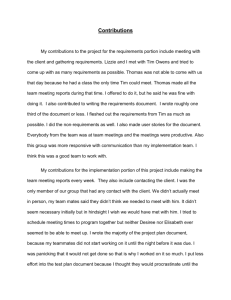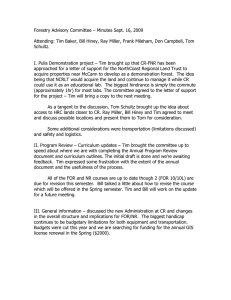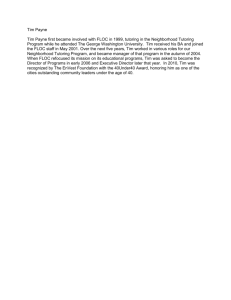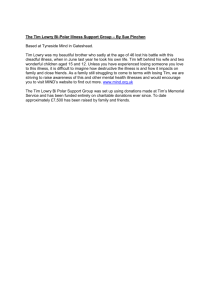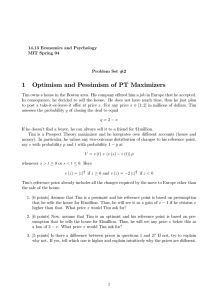14.127 Spring 2004, Problem Set 2
advertisement
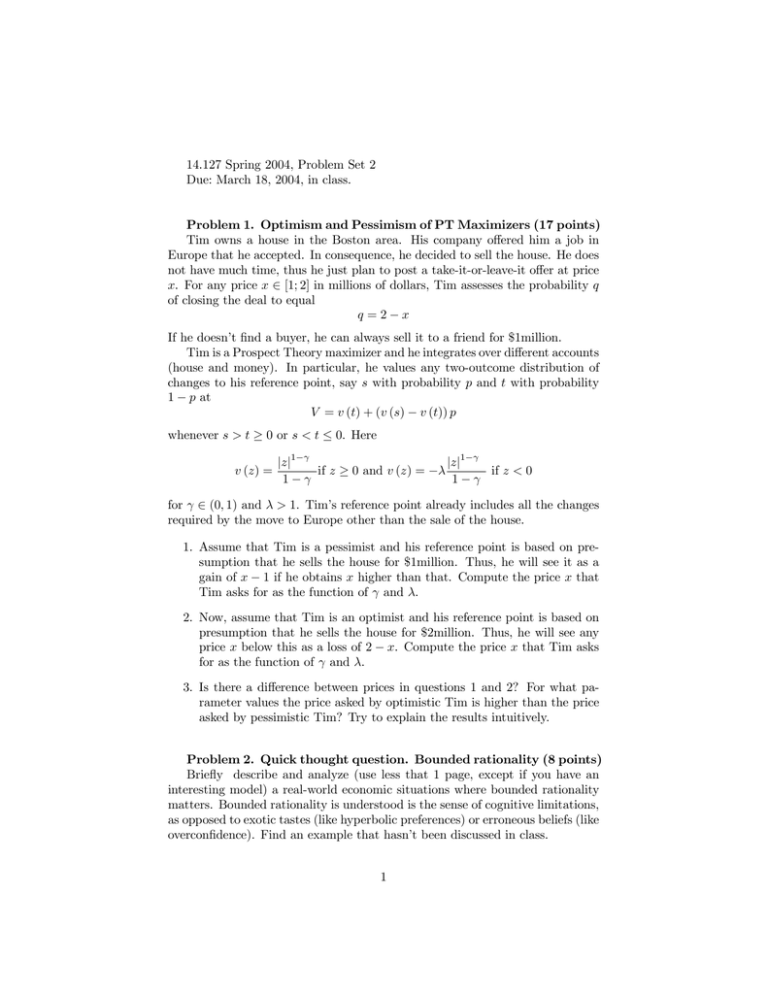
14.127 Spring 2004, Problem Set 2 Due: March 18, 2004, in class. Problem 1. Optimism and Pessimism of PT Maximizers (17 points) Tim owns a house in the Boston area. His company offered him a job in Europe that he accepted. In consequence, he decided to sell the house. He does not have much time, thus he just plan to post a take-it-or-leave-it offer at price x. For any price x ∈ [1; 2] in millions of dollars, Tim assesses the probability q of closing the deal to equal q =2−x If he doesn’t find a buyer, he can always sell it to a friend for $1million. Tim is a Prospect Theory maximizer and he integrates over different accounts (house and money). In particular, he values any two-outcome distribution of changes to his reference point, say s with probability p and t with probability 1 − p at V = v (t) + (v (s) − v (t)) p whenever s > t ≥ 0 or s < t ≤ 0. Here 1−γ v (z) = 1−γ |z| |z| if z ≥ 0 and v (z) = −λ if z < 0 1−γ 1−γ for γ ∈ (0, 1) and λ > 1. Tim’s reference point already includes all the changes required by the move to Europe other than the sale of the house. 1. Assume that Tim is a pessimist and his reference point is based on presumption that he sells the house for $1million. Thus, he will see it as a gain of x − 1 if he obtains x higher than that. Compute the price x that Tim asks for as the function of γ and λ. 2. Now, assume that Tim is an optimist and his reference point is based on presumption that he sells the house for $2million. Thus, he will see any price x below this as a loss of 2 − x. Compute the price x that Tim asks for as the function of γ and λ. 3. Is there a difference between prices in questions 1 and 2? For what parameter values the price asked by optimistic Tim is higher than the price asked by pessimistic Tim? Try to explain the results intuitively. Problem 2. Quick thought question. Bounded rationality (8 points) Briefly describe and analyze (use less that 1 page, except if you have an interesting model) a real-world economic situations where bounded rationality matters. Bounded rationality is understood is the sense of cognitive limitations, as opposed to exotic tastes (like hyperbolic preferences) or erroneous beliefs (like overconfidence). Find an example that hasn’t been discussed in class. 1 Problem 3. Big thought question. Try to solve one of the open problems mentioned during the course. (25 points) For instance, attack one of the following questions: • Try to formulate an alternative to the Bayes rule. State and motivate it, explain what it explains (e.g., insentitivity too some base rates) and potential limitations. • What are the regulatory implications of consumer confusion? • Where does confusion σεi comes from? For instance, provide a cognitive model that gives a microfoundation for this “noise” • Find a model that predicts the level of the confusion σ? e.g., in the mutual fund market, give a model that predicts the reasonable order of magnitude. • Find a model that predicts how σ varies with experience? • How do firms increase/create confusion σ? • Empirically, how could we distinguish whether profits come from true product differentiation, search costs, or confusion noise? • Devise a novel empirical strategy to measure an effect related to the material of lectures 3 to 5. 2

